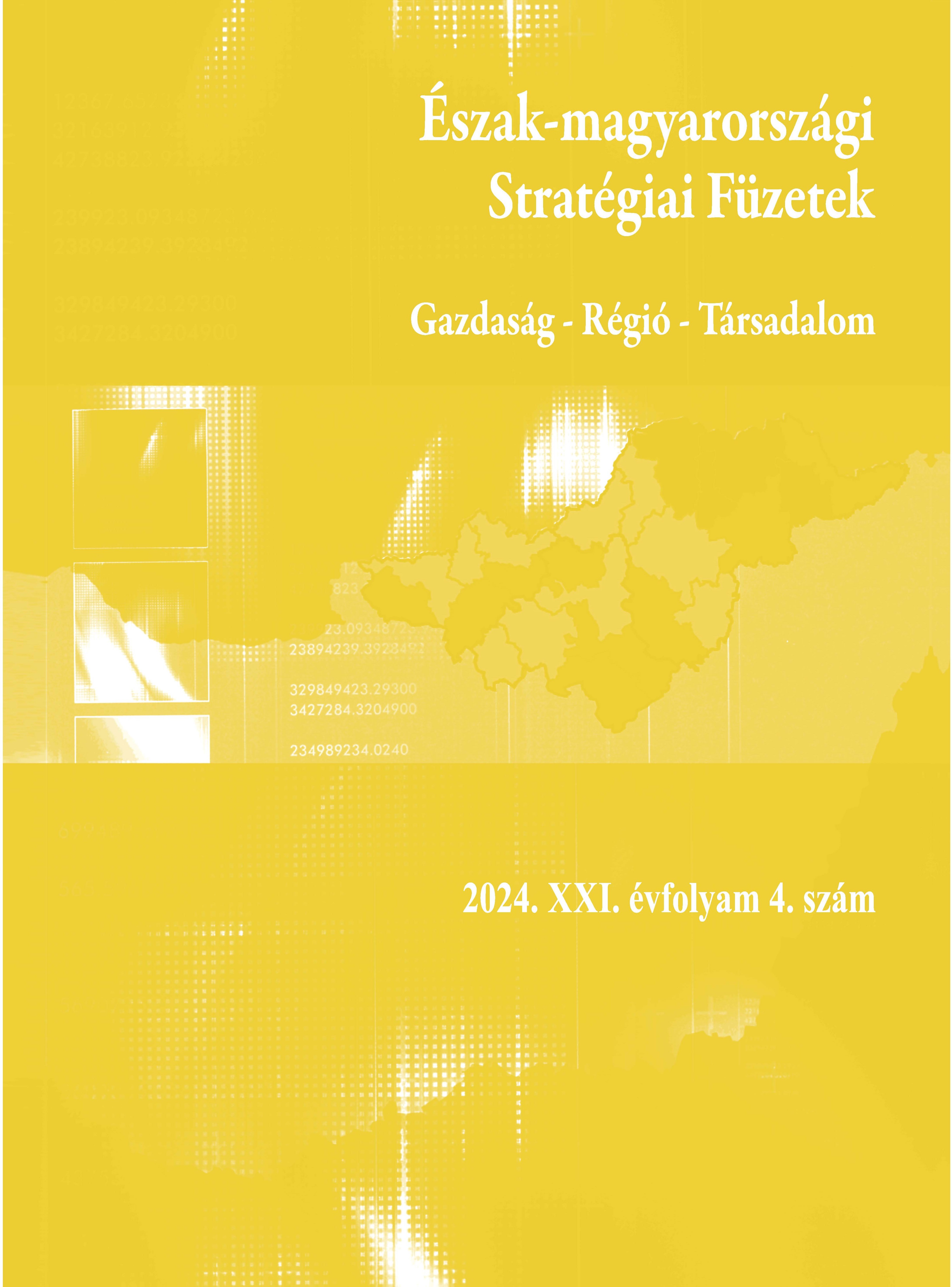Gender equality in Romania: challenges and progress
DOI:
https://doi.org/10.32976/stratfuz.2024.43Keywords:
SDG 5, gender gap, caregiving responsabilities, political representation, education equalityAbstract
The aim of the study is to examine the achievement of the fifth Sustainable Development Goal, gender equality, in Romania. Using quantitative research techniques, the analysis focuses on a number of social and economic variables, comparing them to the EU average to give a more complete picture of the state of affairs in the nation. The findings demonstrate that while Romania has come a long way in the last several decades, there are still many obstacles in the way of gender equality. Based on the analysis, the study proposes recommendations for developing necessary strategies at the political and social levels.
References
Alexa, S., & Baciu, E.-L. (2021). School Dropout and Early School Leaving in Romania: Tendencies and Risk Factors. Revista Româneasca Pentru Educație Multidimensională, 13(2), 18-38. https://doi.org/10.18662/rrem/13.2/40
Apostu, O. (2014). Romania Country Study: Analysing the Situation of Out of School Children. UNICEF Romania O"ce. https://unesdoc.unesco.org/ark:/48223/pf0000221282
Băluță, I., & Tufiș, C. (2021) Political Representation of Women in Romania. Available at: https://library.fes.de/pdf-files/bueros/bukarest/18817.pdf
Bîrsănuc, E. M., & Man, T. C. (2023). Isn’t the Glass Ceiling Thick Enough? Mapping Perceptions on Women’s Economic Empowerment in North-West Region of Romania. Cogent Social Sciences, 9(1). https://doi.org/10.1080/23311886.2023.2242612
Bush, S. S., & Zetterberg, P. (2024). Gender Equality and Authoritarian Regimes: New Directions for Research. Politics & Gender, 20(1), 212-216. https://doi.org/10.1017/S1743923X22000460
Council of Europe (2017). Regional Study on Women’s Political Representation in the Eastern Partnership Countries. 2nd Edition, Council of Europe.
di Bella, E., Leporatti, L., Gandullia, L., & Maggino, F. (2020). Proposing a Regional Gender Equality Index (R-GEI) with an Application to Italy. Regional Studies, 55(5), 962–973. https://doi.org/10.1080/00343404.2020.1836341
European Commission (2020). Gender Equality Strategy 2020-2025. Available at: https://commission.europa.eu/strategy-and-policy/policies/justice-and-fundamental-rights/gender-equality/gender-equality-strategy_en
European Comission (2023). Gender Equality in Europe. Available at: https://commission.europa.eu/system/files/2023-04/annual_report_GE_2023_web_EN.pdf
European Institute for Gender Equality (EIGE). (2021). Gender Equality Index. Available at: https://eige.europa.eu/gender-equality-index/2021
Eurostat (2024). Eurostat database. Available at: https://ec.europa.eu/eurostat/data/database
FRA (2016). Educația: situația romilor în 11 state member ale UE. [Education: The Situation of Roma in 11 EU Member States]. Available at: http://publications.europa.eu/resource/cellar/5db33bbf-e951-11e8-b690-01aa75ed71a1.0005.03/DOC_1
G. Fekete, É., & Solymári, G. (2004). A szociális gazdaság kiépítésének esélye és feltételei az Észak-magyarországi régióban. Észak-magyarországi Stratégiai Füzetek, 1(2), 32-78. https://www.strategiaifuzetek.hu/files/634/33_2004-22004_2.pdf
Harman, J. (2023). Gender Pay Gap in the Slovak Labour Market. Ekonomické rozhľady – Economic Review, 52(1), 29 ─ 47. https://doi.org/10.53465/ER.2644-7185.2023.1.29-47
Helgeson, V. S. (2012). The Psychology of Gender. New York: Psychology Press..
Höhmann, D. (2024). For Women Only? Politicians’ Attitudes Towards Men’s Role in Gender Equality Representation. West European Politics, 1–27. https://doi.org/10.1080/01402382.2024.2325797
Iorga, A. M. (2018). Aspects of Gender Equality in Romania. Scientific Papers Series Management, Economic Engineering in Agriculture and Rural Development, 18(2), 259-264.
Jansen, D., & Vyas-Doorgapersad, S. (2023). Factors Hampering the Implementation of Gender Equality in the Workplace. Insights into Regional Development, 5(4), 80-91. https://doi.org/10.9770/ird.2023.5.4(6)
Jayarani, D., & Sudha, T. (2023). Dimensions of Gender (in) Equality in India / A comparative study among states of India. Journal of Accounting Research, Utility Finance and Digital Assets, 1(4), 382–392. https://doi.org/10.54443/jaruda.v1i4.59
Le Barbanchon, T., Sauvagnat J. (2022). Electoral Competition, Voter Bias, and Women in Politics. Journal of the European Economic Association, 20(1), 352–394. https://doi.org/10.1093/jeea/jvab028
Masood, R. (2023). Role of Women in Today’s Society and the Inequality in Genders. Journal of Life Economics, 10(4), 273-284. https://doi.org/10.15637/jlecon.2216
Ministry of Education, 2015. Strategia privind reducerea părăsirii timpurii a școlii în România [Strategy to Reduce Early School Leaving in Romania], Available at: https://www.edu.ro/sites/default/files/fisiere%20articole/Strategia%20privind%20reducerea%20parasirii%20timpurii%20a%20scolii.pdf
Miroiu, M. (2004). Drumul către autonomie: teorii politice feministe. [The Path to Autonomy: Feminist Political Theories]. Editura Polirom, Iași.
Mirou, M. (coord. 2015). Miscări feministe si ecologiste în România (1990-2014). [Feminist and Environmental Movements in Romania]. Editura Polirom, Iași.
Nassar, C., Nastacă, C.C., & Nastaseanu, A. (2021). Women’s Contribution to Economic Development and the Effects of Gender Pay Gap. Management Research and Practice, 13(2), 60-68.
NIC (2024). National Institute of Statistics. Available at: http://statistici.insse.ro:8077/tempo-online/#/pages/tables/insse-table
Offer, S. (2016). Free Time and Emotional Well-Being. Dodual-Earners Mothers and Fathers Differ? Gender &Society, 30(2), 213–239. https://doi.org/10.1177/0891243215596422
Popa C. E. (2020): Particularities of Early School Leaving in Romania. Expert Journal of Economics, 8(2), 39-46. Available at: https://economics.expertjournals.com/23597704-805/
Qutami, M., & Hamdan, Y. (2023) Covid- 19 and Gender Inequality: A Critique of The Working Woman's Struggle. Heliyon, 9(11), e21852. https://doi.org/10.1016/j.heliyon.2023.e21852
Rivera-Mata. J. (2022) Gender Equality in Spain and Portugal 2006-2022; Economy and Competitiveness. Journal of Globalization, Competitiveness and Governability, 17(1). https://doi.org/10.58416/GCG.2023.V17.N1.06
Robayo-Abril, M., Chilera, C. P., Rude, B., & Costache, I. (2023). Gender Equality in Romania: Where Do We Stand? World Bank. http://hdl.handle.net/10986/40666
Romanian Government. (2020). National Strategy for Gender Equality 2021-2027. Available at: https://www.mmuncii.ro/j33/images/Documente/MMPS/Transparenta_decizionala/09032021Anexa_1_SNESVD_cu_ANDPDCA_CNPP_29_01.pdf
Vinska, O., & Tokar, V. (2021). Cluster analysis of the European Union gender equality and economic development. Business Management and Economic Engineering, 19(2), 373-388. https://doi.org/10.3846/bmee.2021.15382
Downloads
Published
How to Cite
Issue
Section
License

This work is licensed under a Creative Commons Attribution-NonCommercial-NoDerivatives 4.0 International License.







